A heartfelt thank you to Jelgava Technology Secondary School for organizing the excellent event “One Step Closer” for students of grades 10–12 from the Zemgale region, held on 24 September 2025. The event brought together more than 150 students from five regional schools.

Project manager Gunta Čekstere-Muižniece giving a presentation. Photo: Edgars Krinbergs
The aim of the event was to support students in choosing topics for their research or creative projects and to inspire collaboration with specialists from different fields.
The field of biology and the LIFE FOR SPECIES project were represented by project manager Gunta Čekstere-Muižniece (University of Latvia, Institute of Biology), who introduced participants to the latest research directions in biology, the upcoming new edition of the Latvian Red Data Book, and later provided individual consultations to students at the project stand.
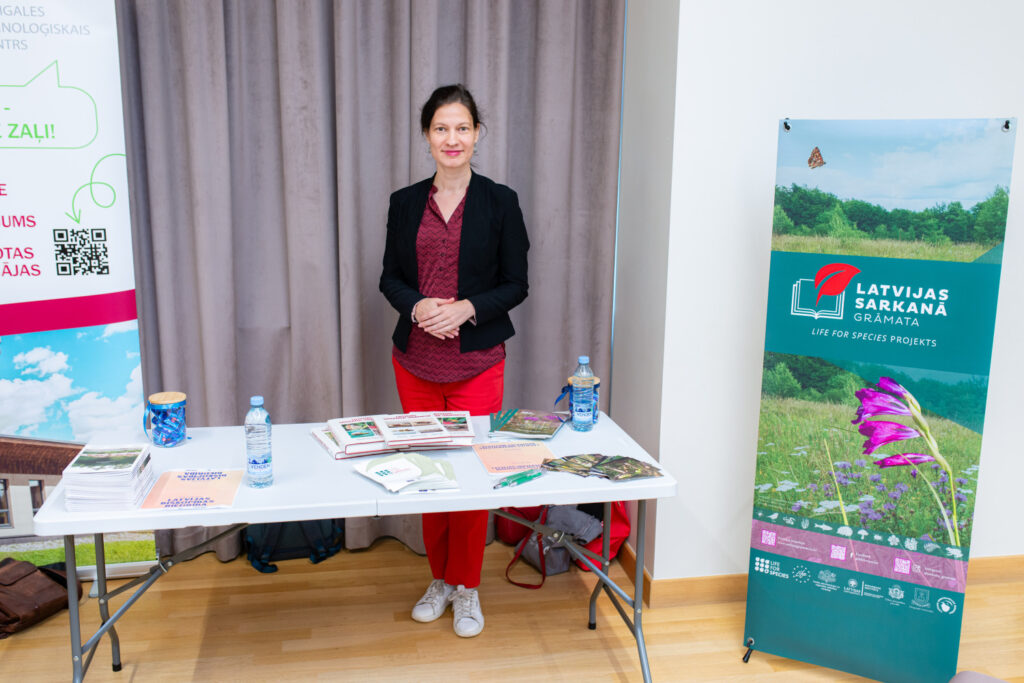
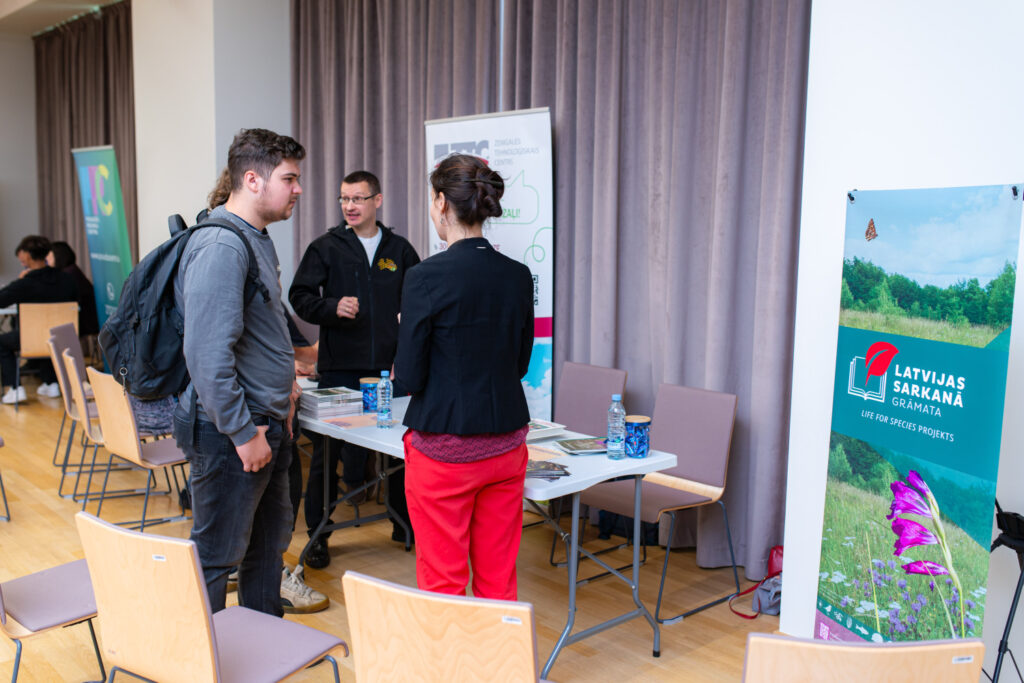
We are delighted that so many young people showed interest in research across various subfields of biology, as well as in rare, endangered, and protected species!
Did you know that protected fungi can also be found in meadows, not just in forests? This month, we highlight the crimson waxcap (Hygrocybe punicea), one of the most striking grassland fungi in Latvia.
Although in some countries the crimson waxcap is considered edible, it is not recommended to eat this mushroom, as it accumulates cadmium, which can be toxic and cause digestive disturbances. Of course, the species should also be protected due to its rarity.
The crimson waxcap is a grassland fungus with an important ecological role – it acts as a soil saprotroph, forms symbiosis with mosses, or sometimes mycorrhiza with trees growing in meadows. It also has high aesthetic value, as its colorful fruiting bodies decorate the grasslands in autumn.
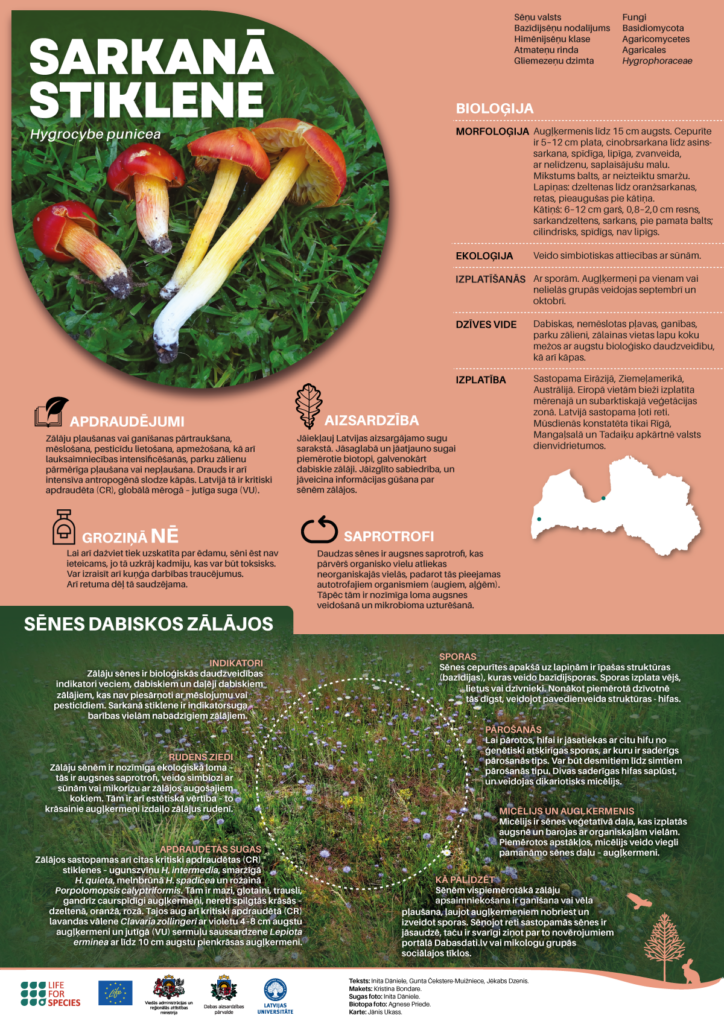
You can read more about the species and how you can help protect it in its fact sheet (PDF version available here). Fact sheet design: Kristīna Bondare.
The body of the crimson waxcap reaches up to 15 cm in height. The cap is 5–12 cm wide, vermilion to blood-red, shiny, sticky, bell-shaped, with an uneven and often cracked edge. The flesh is white and has a faint smell. The gills are yellow to orange-red, spaced apart, and attached to the stem. The stem is 6–12 cm long and 0.8–2.0 cm thick, red-yellow to red, white at the base, cylindrical, glossy, and not sticky.
In Latvia, the crimson waxcap is classified as a Critically Endangered (CR) species.
This month, we highlight the rattle grasshopper (Psophus stridulus) - a small grasshopper species that can be observed in nature from mid-July until the end of September.
The Latvian name of the species derives from the characteristic rattling sound produced by males during flight. Because of its bright red hindwings, the species is also known as the red-winged grasshopper.
Adult individuals can be seen from mid-July to late September. They are well camouflaged in their surroundings, so most often the species is detected by spotting or hearing flying males.
You can read more about the species and how to help protect it in its fact sheet (PDF version available here). Fact sheet design: Kristīna Bondare.
The rattle grasshopper is a small, robust grasshopper with a dark grey (sometimes brown) and mottled coloration. Its hind legs feature light stripes, and the pronotum (thoracic shield) is arched upward with noticeable depressions on both sides. The hindwings are orange-red with black tips.
Females are larger and stockier than males, and their wings usually do not extend beyond the tip of the abdomen.
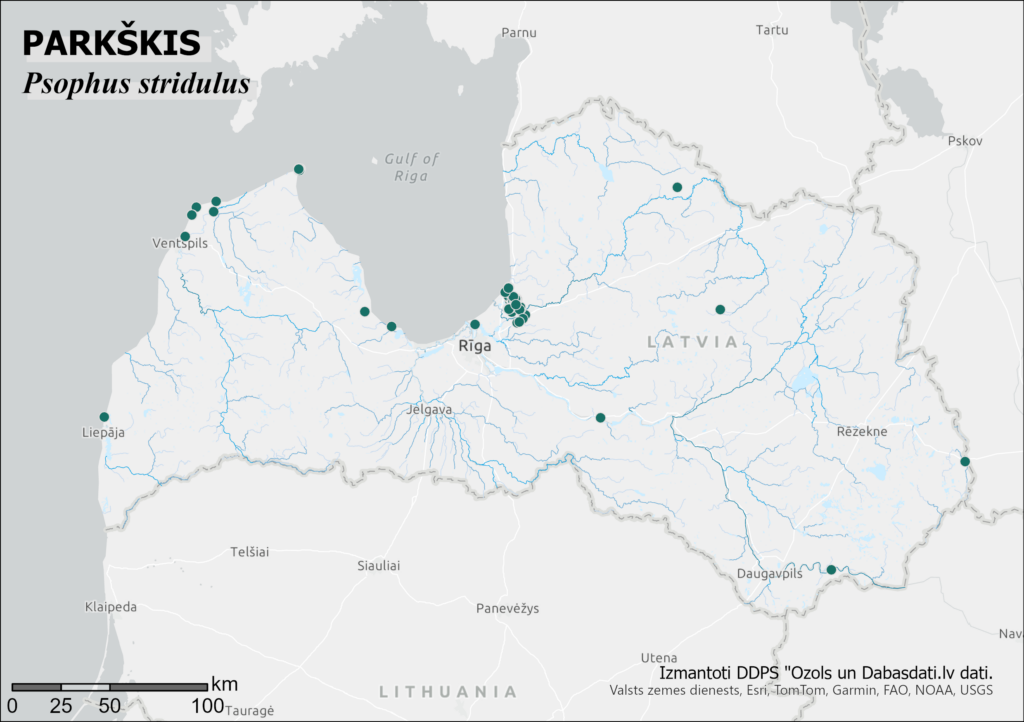
Distribution map author: Jānis Ukass
In Latvia, the rattle grasshopper is classified as an Endangered (EN) species.
On 26 July 2025, the Meadow Festival took place in Dreiliņkalns Park, organized by the Latvian Fund for Nature. This all-day event was dedicated to natural meadows and nature-friendly practices.
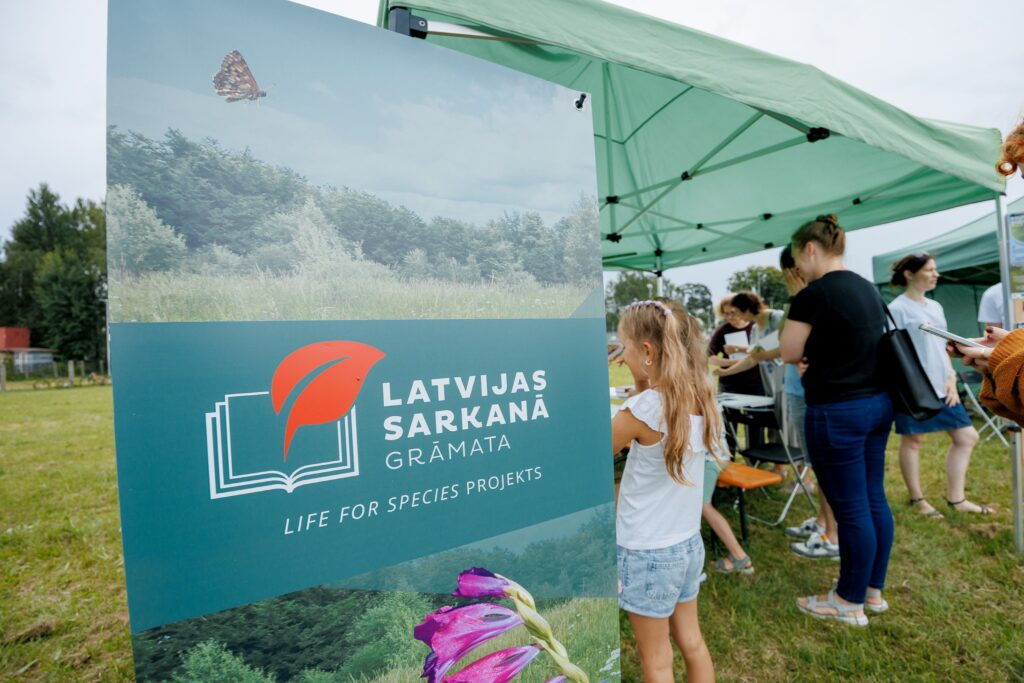
Throughout the day, the LIFE FOR SPECIES project team informed festival visitors about the upcoming Latvian Red Data Book, protected species, and hosted a quiz as well as an activity corner for the youngest participants.
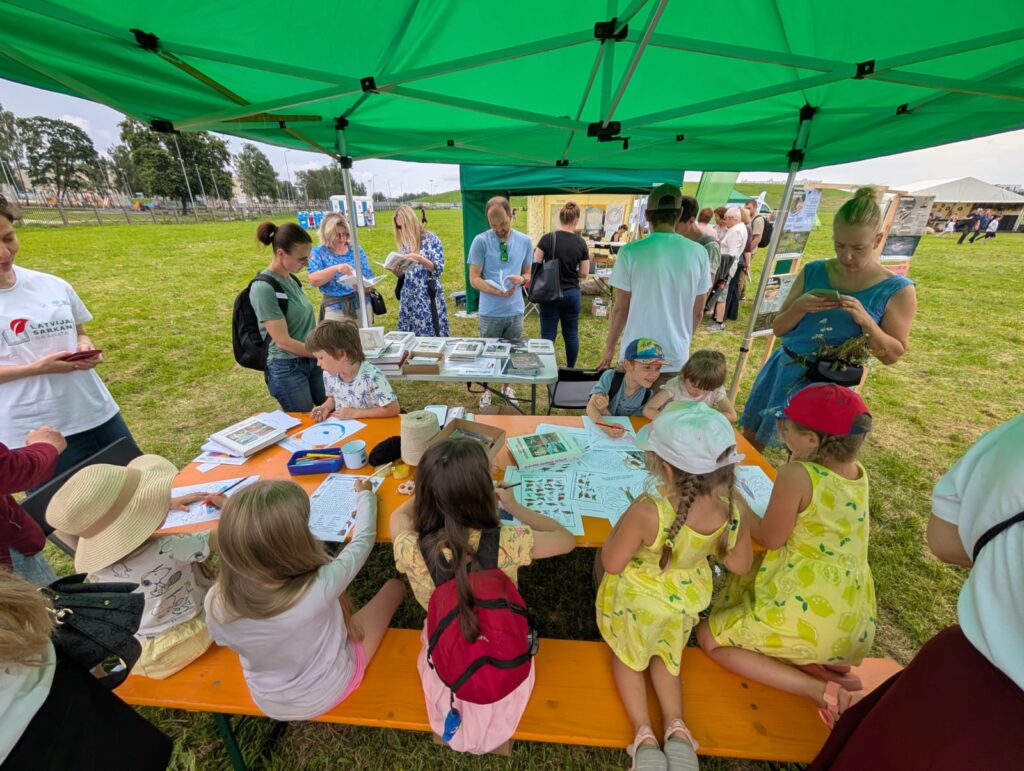
The quiz created for the festival is still available — everyone is welcome to test their knowledge here:
👉 https://forms.cloud.microsoft/e/8ty7WEjFnb
For the youngest visitors, we offered creative activities, including mask making, puzzle assembling, and fun worksheets.
A heartfelt thank you to everyone who visited the LIFE FOR SPECIES tent, and to the festival organizers for putting together such a wonderfully arranged event!
As July comes to an end, we’d like to introduce a truly beautiful butterfly that can still be seen in nature until early August – the alcon blue (Phengaris alcon).
The male Alcon Blue has bright blue upper wings with darker margins and lacks the black spots characteristic of other species in the same genus. The female, on the other hand, is dark brown with a bluish base on the wings and faint, darker markings.
The Alcon Blue is a specialist species that depends on a specific host plant - Gentiana pneumonanthe. In Europe, it has also been observed using the Cross-leaved Gentian (G. cruciata). The female lays easily noticeable white, spherical eggs on the buds, flowers, or stems of the host plant. After hatching, the caterpillar feeds inside the flower of the gentian for about three weeks.
You can read more about the Alcon Blue and how you can help protect this species in its fact sheet (PDF version available here). Fact sheet design: Madara Eihe, Kristīna Bondare.
The Alcon Blue is threatened by the abandonment and transformation of low-productivity grasslands – including fertilization, intensive grazing, early mowing, drainage, afforestation, and eutrophication – all of which lead to the loss of its host plant.
In Latvia, it is classified as Endangered (EN) due to its very small population and the rarity of its host plant. In Europe, it is considered Near Threatened (NT), but is endangered in many countries.
Project experts have prepared entries for the Latvian National Encyclopedia about eight endangered species found in Latvia. The prepared entries (in latvian) can be accessed via the links below:
Project experts have prepared entries for the Latvian National Encyclopedia about eight endangered species found in Latvia.
As the LIFE FOR SPECIES project nears its conclusion, the team is increasingly engaged in sharing experiences and results with others—helping to ensure the long-term impact and transferability of the project’s outcomes.
From April 28 to May 2, 2025, Liene Auniņa, head of the vascular plant species group from the LIFE FOR SPECIES team at the University of Latvia’s Institute of Biology, participated in the international conference “33rd European Vegetation Survey – Vegetation of Europe: Diversity, Dynamics, Conservation, and Restoration” in Perugia, Italy. She presented a poster titled “Extinction risk assessment of diagnostic species of mire classes – a case of Latvia,” showcasing the IUCN-based assessment results for 41 mire and spring species in Latvia. These included both specially protected species and those listed in the 2003 edition of the Latvian Red Data Book.
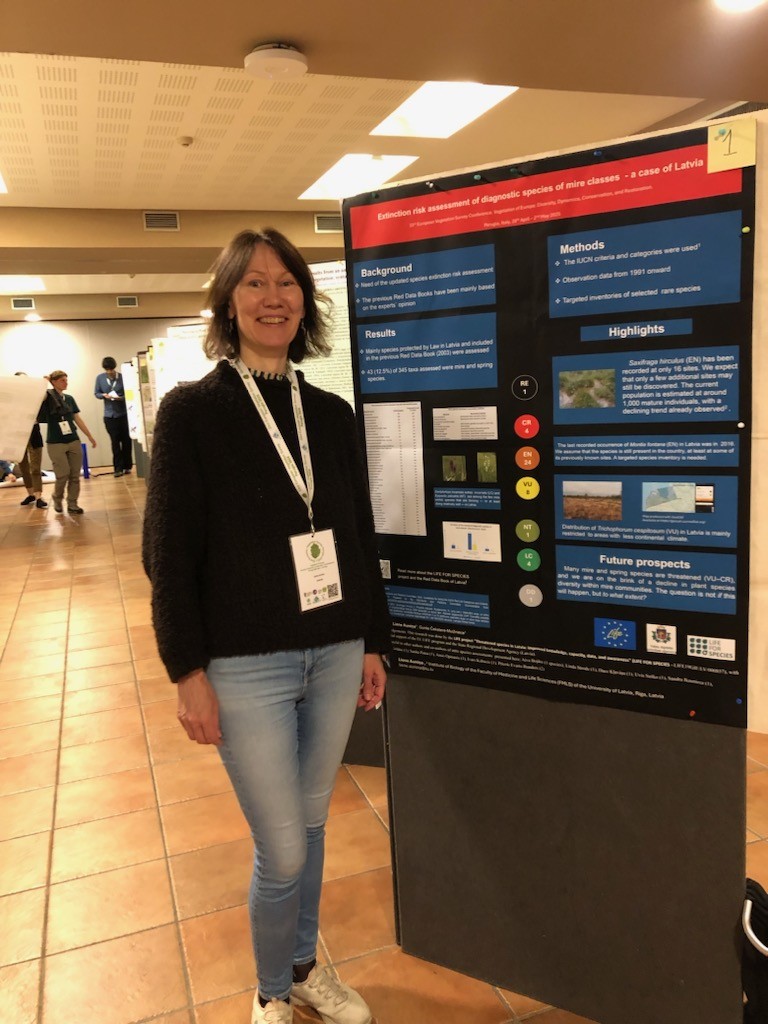
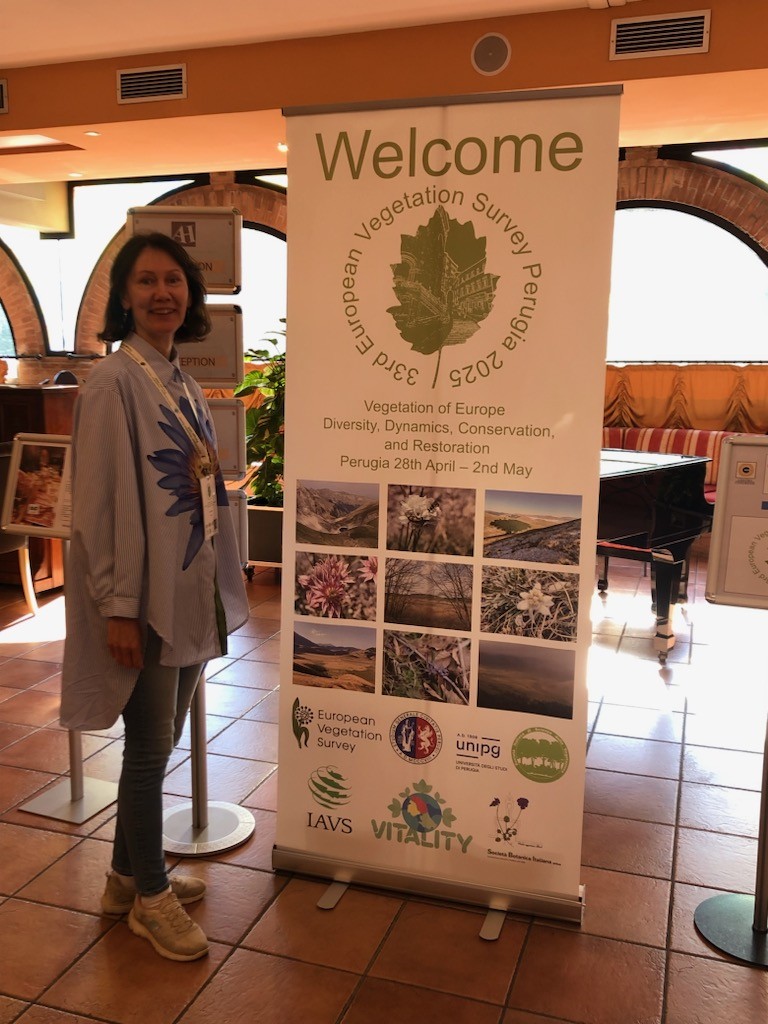
On May 8, project coordinator Jēkabs Dzenis presented the project’s activities to partners of the LIFE urbanCircles project from Latvia, Estonia, and Denmark. The presentation focused particularly on the conservation of endangered species in urban environments.
On May 15, the project’s cartographer Jānis Ukass gave a presentation at the Latvian Esri Software Users Conference, discussing the challenges and solutions in spatial data processing for the development of the Latvian Red Data Book.
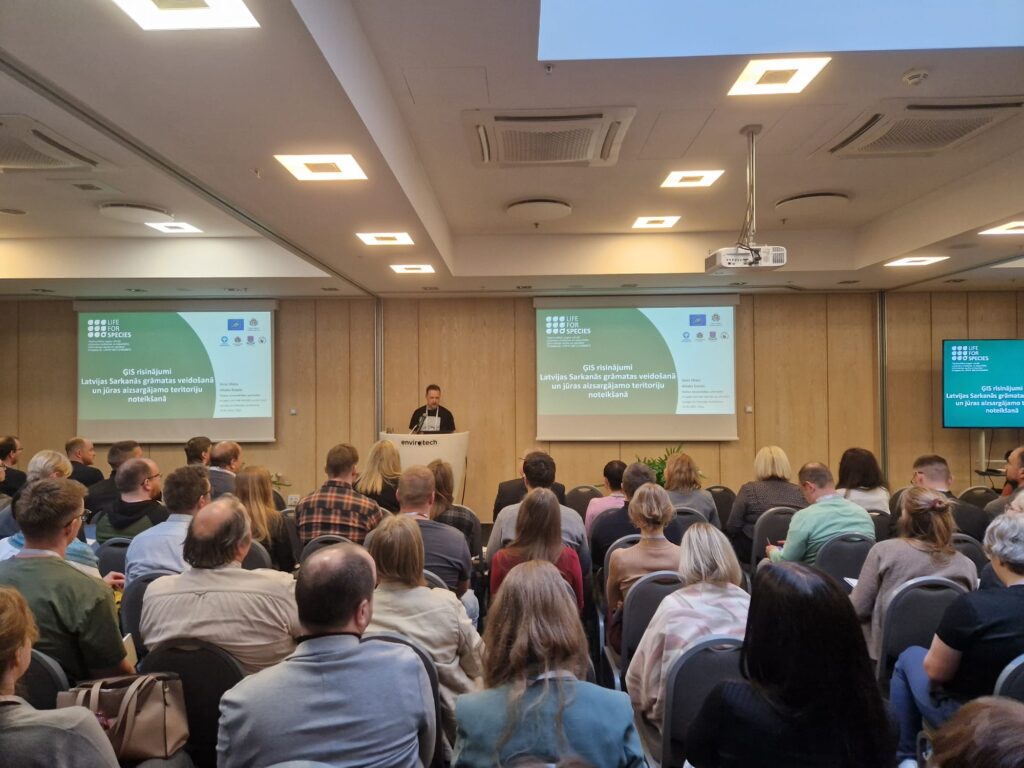
On May 21, the LIFE FOR SPECIES team participated in a working meeting with Latvian and Lithuanian partners of the LIFE OsmoBaltic project. Jēkabs Dzenis introduced the project’s key activities, especially the work on updating the protected species list. The meeting also included in-depth discussions on the technical solutions developed for entering, processing, and visualizing species spatial data within the Ozols Nature Data Management System.
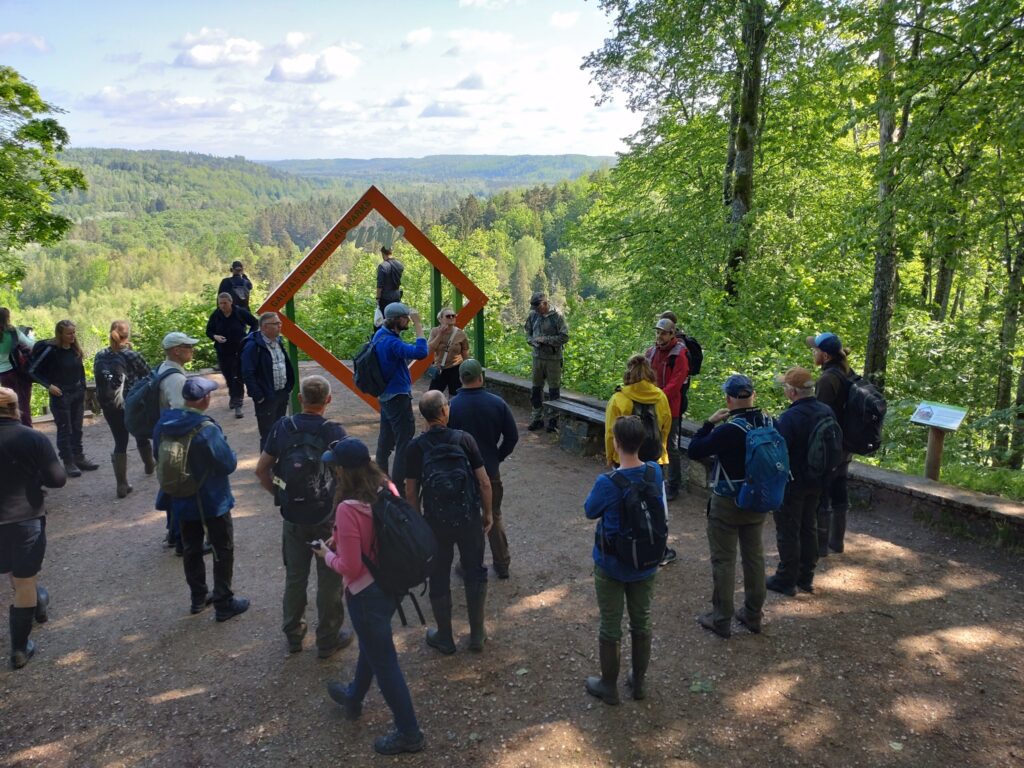
On June 2–3, the project team helped host a visit from Danish nature conservation experts to Latvia. Project expert Dāvis Ozoliņš presented the project's extinction risk assessments, with a particular focus on freshwater-associated invertebrates. Meanwhile, Jēkabs Dzenis led an educational hike through Gauja National Park, showcasing its natural values and the broader species protection challenges in Latvia.
Special thanks to Baltic Environmental Forum, LIFE GoodWater IP, Latvian LIFE Help Desk, and the LIFE IP LatViaNature project team for their collaboration in organizing this successful visit!
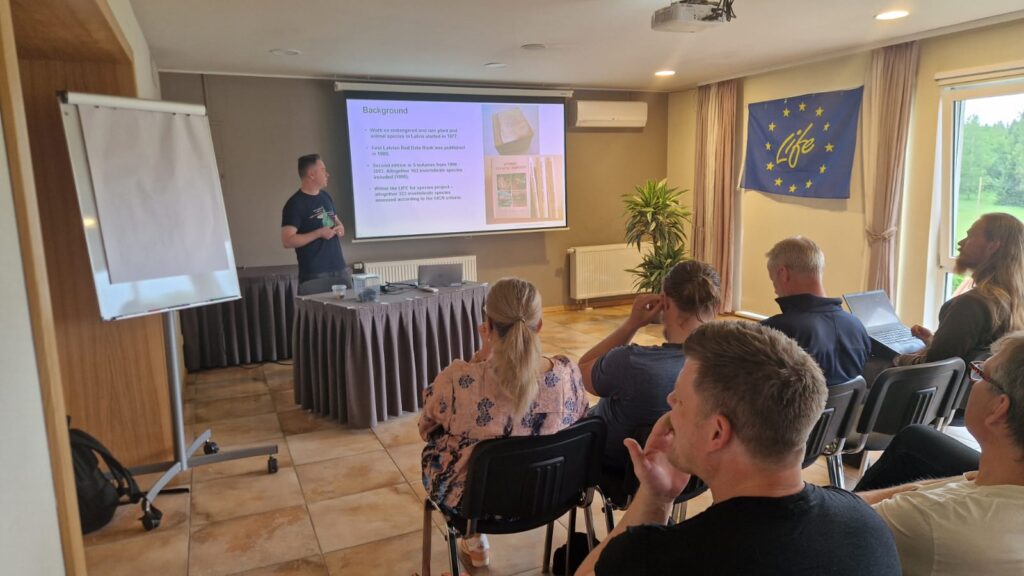
This weekend, many of us will be heading out into nature in search of traditional midsummer plants. But before the celebrations begin, we encourage you to get acquainted with this month’s protected species – the bird’s-eye primrose (Primula farinosa). Learn how to recognize it, so it doesn’t accidentally end up in a festive wreath or decoration!
The species name refers to the bright yellow ring of stamens at the center of the flower. In Latvian folk tradition, the plant is also known by several other names, such as asariņas, bezdelīgactiņš, gaidelīte, gaigaliņi, and putnactiņa. The scientific name “farinosa” comes from the mealy coating on the underside of the leaves and the flower stalk, giving it a powdery appearance.
The bird’s-eye primrose is a perennial herbaceous plant that grows up to 25 cm tall. Its flowers are pinkish-purple and arranged in dense clusters on multiple flower stalks. The leaves form a rosette and have a white, mealy underside, as do the flower stalks. In the right conditions, the plant can live for up to 20 years!
You can read more about the bird’s-eye primrose and how you can help protect it in the species fact sheet (available in latvian). The PDF version is available [here]. Fact sheet design by Kristīna Bondare.
The species is threatened by the drainage of fen meadows and grasslands, as well as the abandonment of mowing or grazing. These impacts are worsened by climate change, prolonged droughts, and drainage in surrounding areas. Additional threats include afforestation and ploughing of its habitats.
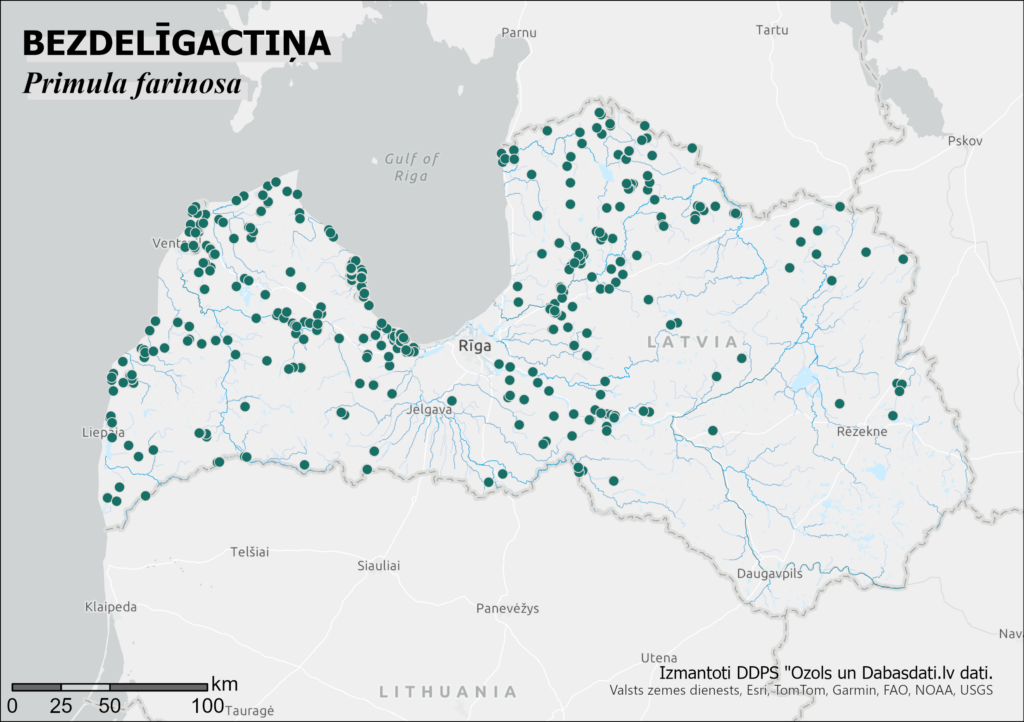
In the LIFE FOR SPECIES project, the bird’s-eye primrose has been assessed as Vulnerable (VU) due to its small, fragmented, and declining range, alongside observed loss of habitat area and quality.
Work continues on developing proposals for updating Latvia’s list of protected species. On June 4, a stakeholder meeting took place in Ķemeri National Park, bringing together representatives from state institutions, the commercial sector, research bodies, and NGOs. The aim was to share progress so far, present conclusions from the ongoing legal review, and gather input on next steps for the project’s implementation.
The second part of the meeting took place outdoors, in the habitats of threatened species, where participants discussed the challenges and possible solutions for species conservation directly in the field.
Key topics addressed during the meeting included:
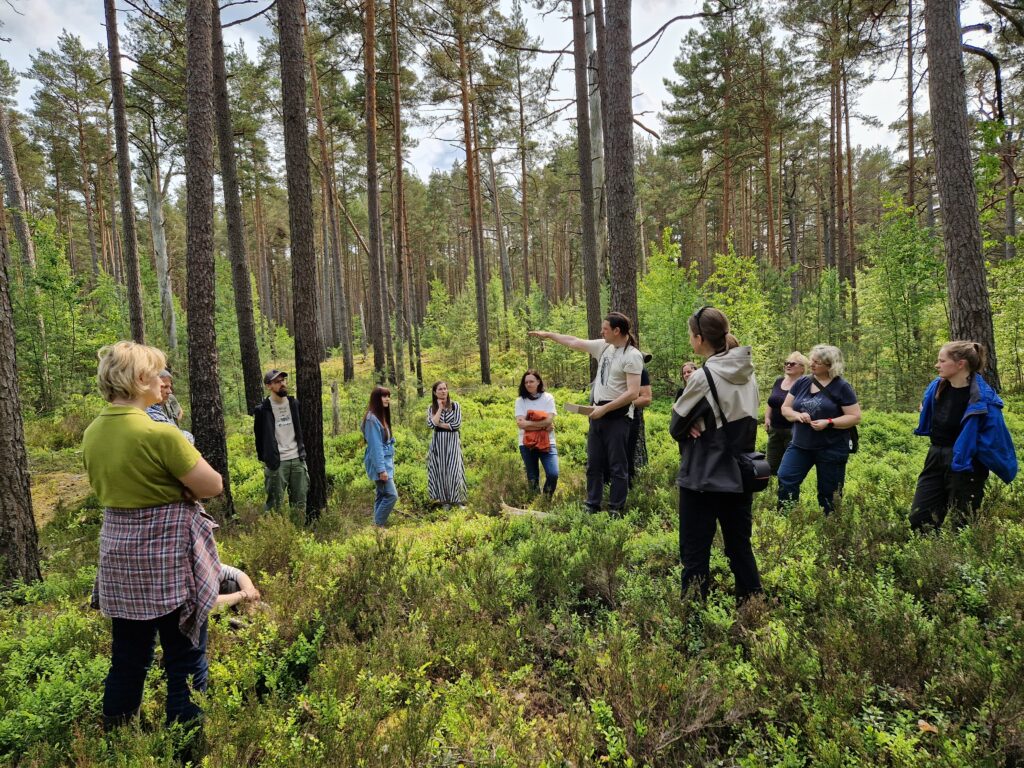
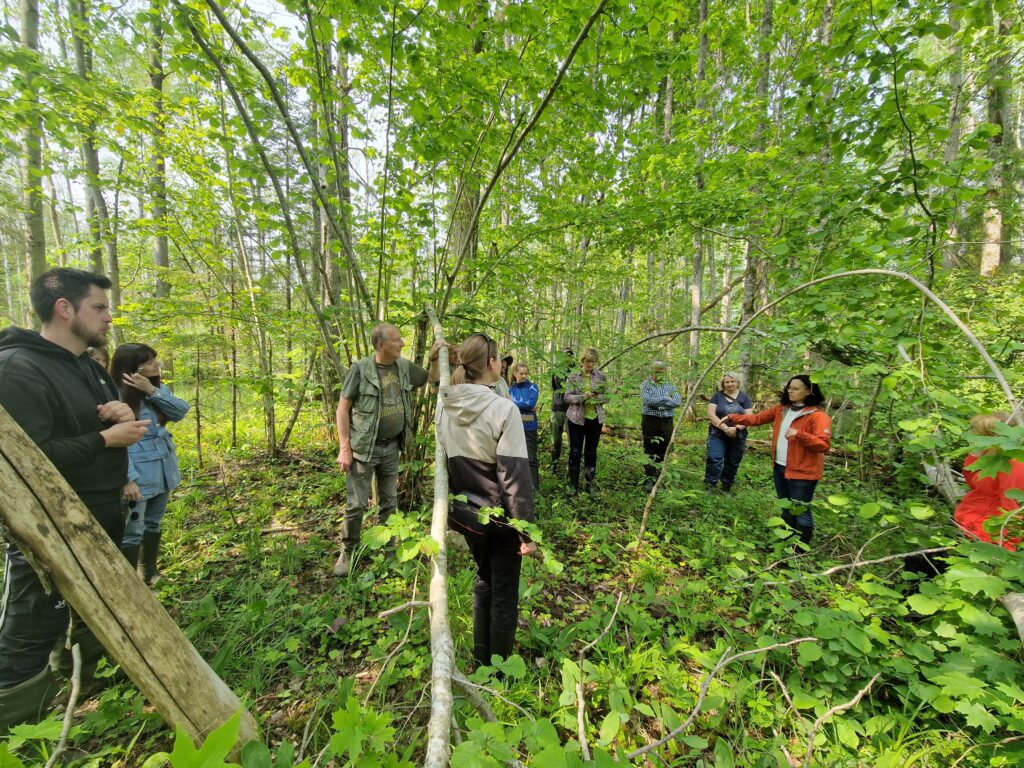
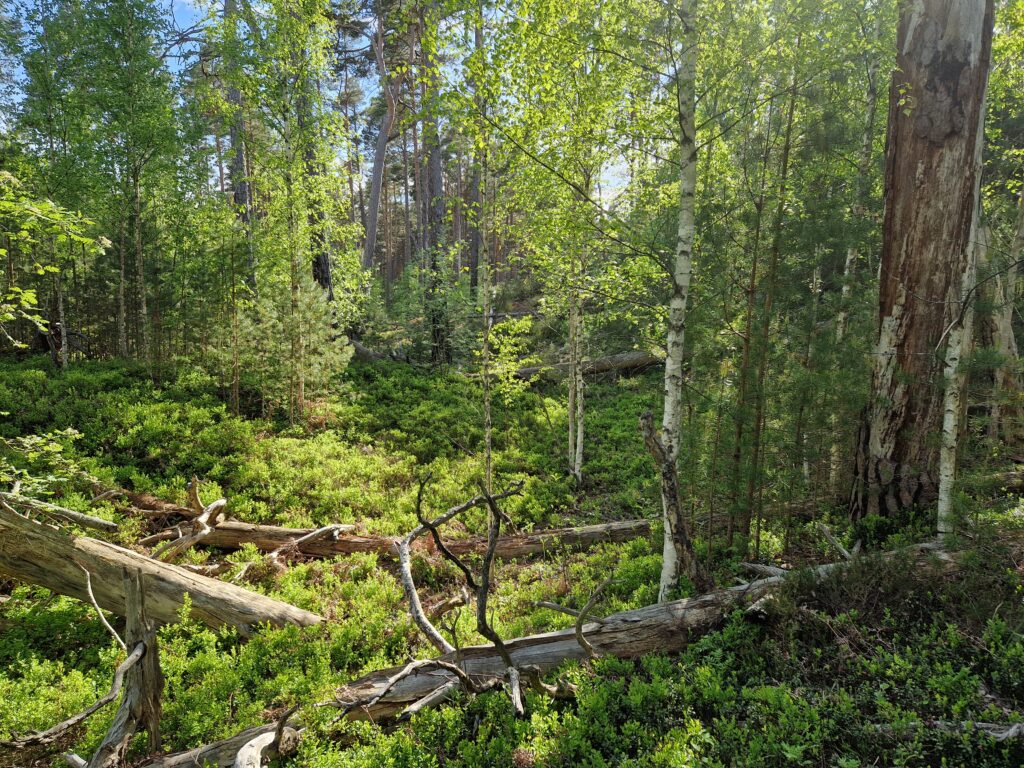
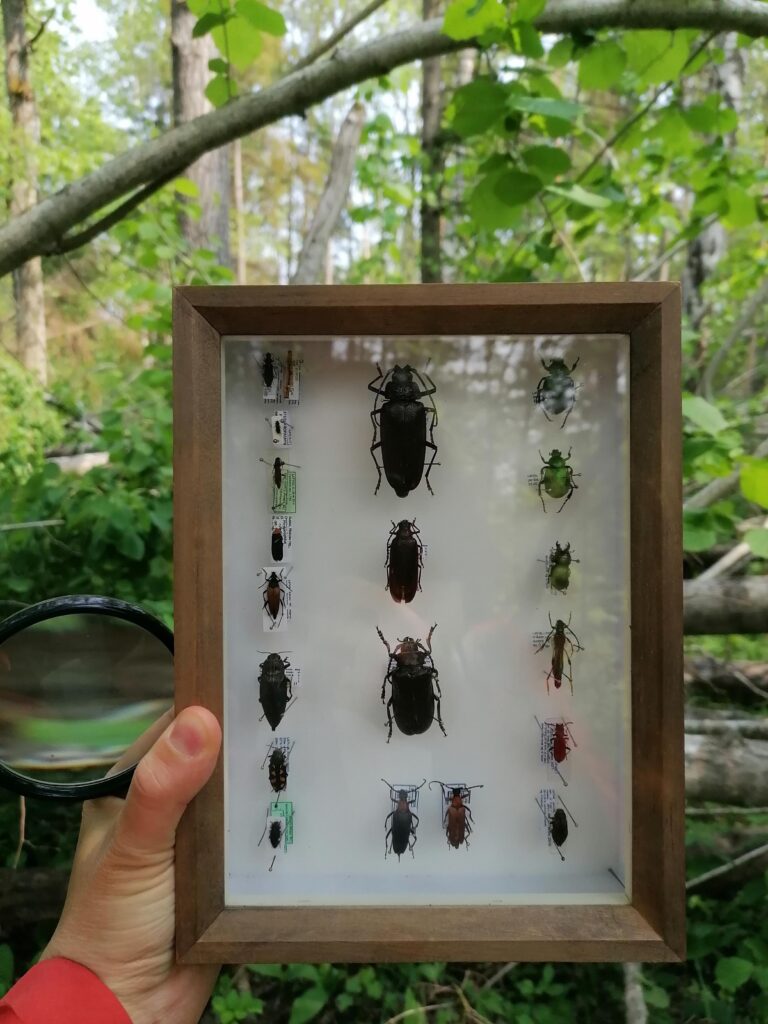
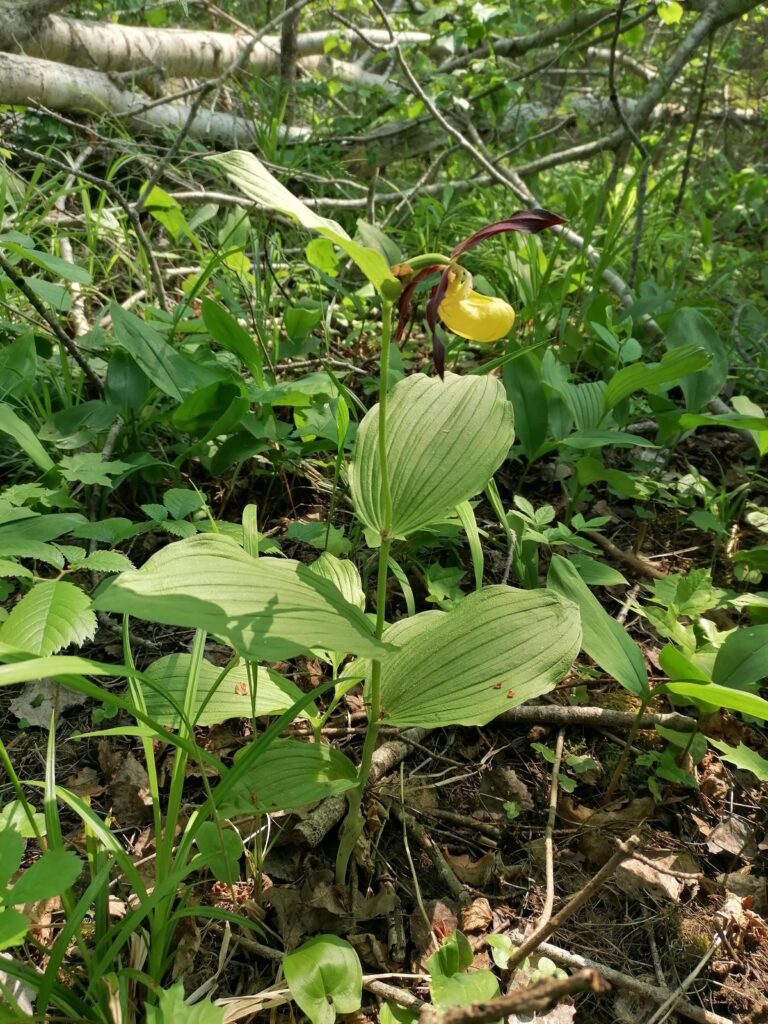
As May draws to a close, the weather finally begins to treat us to warmer days, inviting more frequent outings into nature. During your walks, keep an eye out for this month’s protected species – the smooth snake (Coronella austriaca).
The genus name Coronella comes from the dark markings on the top of the head, which faintly resemble a crown. The smooth snake’s body can be brownish or greyish, with 2–4 longitudinal rows of spots that merge into diffuse bands toward the tail. The underside is grey to reddish-black. A narrow dark stripe runs along the side of the head, passing through the eye. It differs from other snakes by having smooth scales; from the common viper (adder) by its round pupil; and from slow worms by its large, transverse belly scales, lack of eyelids, and more defined body shape.
The smooth snake is cold-blooded and thermophilic, meaning it thrives in warmth. In Latvia, it is found mainly in coastal regions, where winters are milder.
Although snakes may not be everyone's favorite encounter, the smooth snake is non-venomous, and spotting one in the wild is truly a rare event. In the LIFE FOR SPECIES project, it is assessed as Endangered (EN), meaning it faces a very high risk of extinction in the wild.
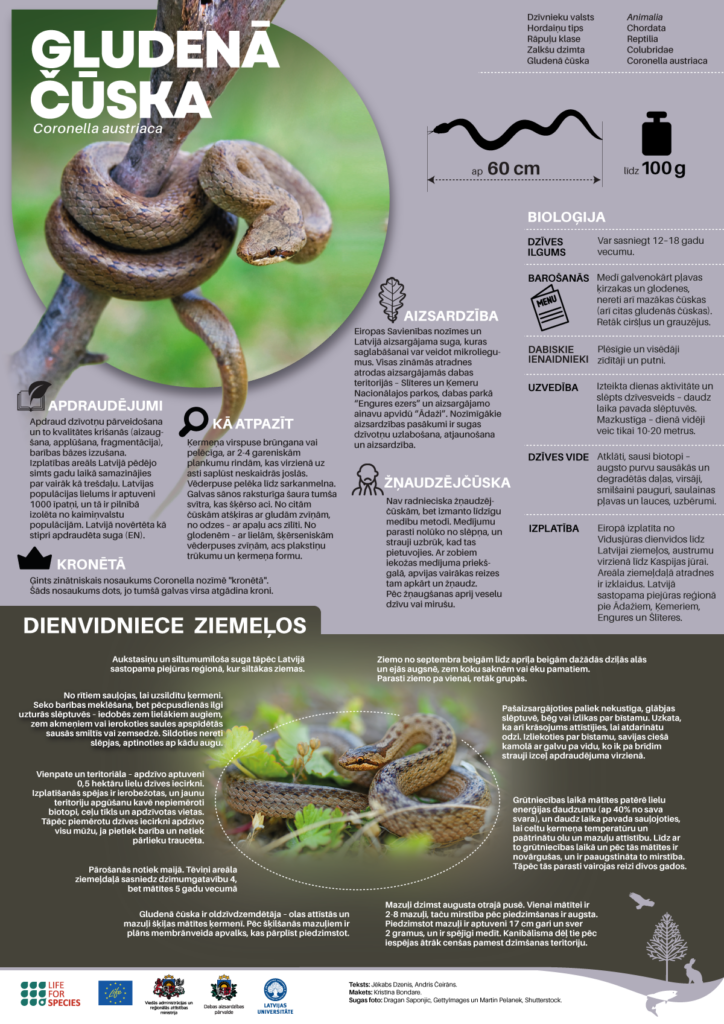
Smooth snakes mate in May, making this the time when they are most likely to be seen. During pregnancy, females expend a significant amount of energy – up to 40% of their body weight – and spend a lot of time basking to raise their body temperature and speed up the development of eggs and young. As a result, females become weakened during and after pregnancy, with increased mortality rates. For this reason, they usually reproduce only once every two years.
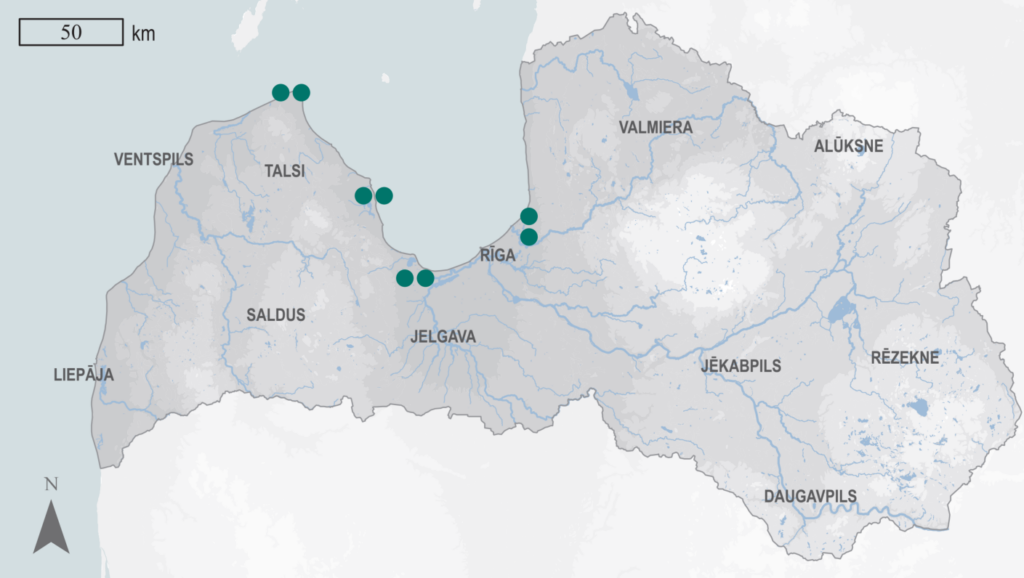
The smooth snake is ovoviviparous – the eggs develop and hatch inside the female’s body. At birth, the hatchlings are encased in a thin membrane that breaks open during birth.
Young snakes are born in the second half of August. A female typically gives birth to 2–8 hatchlings, but postnatal mortality is high. At birth, they are around 17 cm long, weigh about 2 grams, and are capable of hunting. Due to cannibalism, they try to leave their birthplace as quickly as possible.